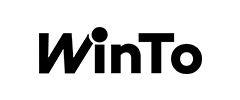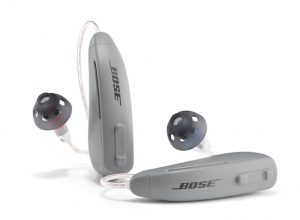The US Food and Drug Administration issued a proposal on OTC (over-the-counter) hearing aids on October 19, 2021. The proposed rules will allow hearing aids to be sold directly to consumers in stores or online without medical examination or audiology expert wear. While this rule increases market competition, it also needs to ensure the safety and effectiveness of over-the-counter drugs and prescription hearing aids.
In addition to the monopoly of the hearing aid market, which is expensive, high-precision components such as speakers, microphones, and related customized acoustic modules for hearing aids are also one of the reasons for the high prices of hearing aid products. Because of the high price, many hearing-impaired patients cannot use hearing aids.
After the establishment of the US FDA’s proposed rules, there will be policy support. More and more manufacturers will join the hearing aid camp, breaking the monopoly of the five major manufacturers, and promoting the development of hearing aid technology and the improvement of production efficiency. With the support of policies and technologies, the hearing aid market will usher in major changes. Not only will the market share be reshuffled, but the technology will also be further improved and innovated. A new milestone in the field of hearing aids has arrived.
There are already some products on the market that combine hearing aids and TWS earphones into one. The traditional hearing aid market will usher in a new group of strong competitors, injecting new blood into the hearing aid market.
Bose:
In May 2021, Bose launched its first SoundControl hearing aid product.
Bose SoundControl is a RIC behind-the-ear hearing aid, which is the mainstream form of the current hearing aid market. The sound tube can be replaced, and the battery adopts a 13A zinc-air battery. Bose designed the matching Bose Hear APP for SoundControl hearing aids. The hearing aids and APP can be connected via Bluetooth low energy. In the APP, the hearing aid can be used for volume balance, volume adjustment, directional/omnidirectional microphone strategy, listening program switching or customization. And other functions, Bose said it can provide clinically verified and audiologist quality feedback results.
In addition, Bose SoundControl hearing aids can adjust the listening program in real time according to the environment during use, without the help of healthcare professionals. SoundControl products are priced at $849.95
Sennheiser:
In February 2021, Sennheiser, a well-known German audio brand, announced its intention to sell its consumer audio business. In May, Sennheiser’s official website officially announced that it had reached a cooperation with Sonova, a global medical hearing solution provider, to sell Sennheiser’s consumer electronics business at a price of 200 million euros. The delivery is planned to be completed by the end of 2021.
Sennheiser is a giant German audio company whose consumer electronics products represent a high-quality listening experience. After Sonova takes over Sennheiser’s consumer electronics business, it will supplement its hearing product portfolio including hearing aids and cochlear implants with headphones and sound bars. Sonova will strengthen and further develop its business areas through the complementary capabilities of the two companies. To be the first to enter a new market position means to be qualified for the lead while also being able to grasp more opportunities.
Jabra:
In June 2021, Jabra officially announced a hearing aid-Jabra Enhance Pro, and has received approval from the US Food and Drug Administration.
Jabra Enhance Pro adopts the RIE (receive in the ear) design of traditional hearing aids. The receiver is placed in the ear canal, and the receiver and the hearing aid host are connected through an external conduit with a special metal wire. Jabra Enhance Pro also supports Bluetooth Low Energy and is compatible with audio and data transmission for iOS and Android devices. Jabra Enhance Pro products provide 3 models and 8 colors for selection, one of which supports rechargeable function.
Jabra Enhance Pro is also equipped with an advanced charging device, so that hearing aids can be charged anytime, anywhere, a single charge can provide up to 30 hours of power. In addition, when Jabra Enhance Pro is used with the Enhance Pro App, the wearer can set the volume of the hearing aid on the mobile App and save the corresponding settings. Use Sound Enhancer to adjust the voice focus, noise and wind noise level, and use Nature Sounds to adjust the change and frequency of the tinnitus sound generator.
If the hearing aid is lost, it can also be tracked via Bluetooth to help retrieve it. More importantly, hearing care professionals can update hearing aid programs remotely and send new hearing aid software without going to the clinic. For traditional hearing aids, this is not only a technological innovation, but also a better hearing experience.
I believe that in the near future, more manufacturers will also join the consumer hearing aid market. This new market will be the next explosive point.


